#Ethiopian airs
Explore tagged Tumblr posts
Text

Blues has evolved from the unaccompanied vocal music and oral traditions of slaves imported from West Africa and rural Africans into a wide variety of styles and subgenres, with regional variations across the United States. Although blues (as it is now known) can be seen as a musical style based on both European harmonic structure and the African call-and-response tradition that transformed into an interplay of voice and guitar, the blues form itself bears no resemblance to the melodic styles of the West African griots. Additionally, there are theories that the four-beats-per-measure structure of the blues might have its origins in the Native American tradition of pow wow drumming. Some scholars identify strong influences on the blues from the melodic structures of certain West African musical styles of the savanna and sahel. Lucy Durran finds similarities with the melodies of the Bambara people, and to a lesser degree, the Soninke people and Wolof people, but not as much of the Mandinka people. Gerard Kubik finds similarities to the melodic styles of both the west African savanna and central Africa, both of which were sources of enslaved people.

No specific African musical form can be identified as the single direct ancestor of the blues. However the call-and-response format can be traced back to the music of Africa. That blue notes predate their use in blues and have an African origin is attested to by "A Negro Love Song", by the English composer Samuel Coleridge-Taylor, from his African Suite for Piano, written in 1898, which contains blue third and seventh notes.

The Diddley bow (a homemade one-stringed instrument found in parts of the American South sometimes referred to as a jitterbug or a one-string in the early twentieth century) and the banjo are African-derived instruments that may have helped in the transfer of African performance techniques into the early blues instrumental vocabulary. The banjo seems to be directly imported from West African music. It is similar to the musical instrument that griots and other Africans such as the Igbo played (called halam or akonting by African peoples such as the Wolof, Fula and Mandinka). However, in the 1920s, when country blues began to be recorded, the use of the banjo in blues music was quite marginal and limited to individuals such as Papa Charlie Jackson and later Gus Cannon.

Blues music also adopted elements from the "Ethiopian airs", minstrel shows and Negro spirituals, including instrumental and harmonic accompaniment. The style also was closely related to ragtime, which developed at about the same time, though the blues better preserved "the original melodic patterns of African music"

#african#igbo#afrakan#kemetic dreams#brownskin#africans#afrakans#african culture#brown skin#igbo culture#igbos#nigeria#igboland#Ethiopian airs#African music#Negro spirituals#wolof#fula#mandinka#banjo#african instruments#halam#akonting#jitterbug#Papa Charlie Jackson#ragtime#harmonic structure#harmony#afrakan spirituality#Bambara people
34 notes
·
View notes
Text























The Star Alliance, the world's largest global airline alliance, was founded on 14 May 1997.
#United Airlines#787 Dreamliner#Swiss International Air Lines#Air Canada#Flughafen Zürich#Zurich#original photography#Austrian Airlines#Scandinavian Airlines#Lufthansa#Croatia Airlines#JFK Airport#John F. Kennedy International Airport#New York City#2018#travel#vacation#Star Alliance#founded#14 May 1997#anniversary#history#air travel#Schweiz#Switzerland#USA#landmark#cityscape#tourist attraction#Ethiopian Airlines
3 notes
·
View notes
Text

ETHIOPIAN AIRLINES BUENOS AIRES diário, com MAIS CONFORTO, ESPAÇO & BENEFÍCIOS exclusivos
https://mail.mailnews.com.br/mail/ET-16-24/et-16-24.html
Este informativo é publicado pela Mailnews e direcionado exclusivamente aos Agentes de Viagens.
#ETHIOPIAN AIRLINES#BUENOS AIRES diário#com MAIS CONFORTO#ESPAÇO & BENEFÍCIOS exclusivos#https://mail.mailnews.com.br/mail/ET-16-24/et-16-24.html#--------------------------------------------------------------#Este informativo é publicado pela Mailnews e direcionado exclusivamente aos Agentes de Viagens.
0 notes
Text
Connecting Continents: Ethiopian Airlines Dubai – Your Global Link
🌍✈️ Exciting News Alert! 🌍✈️
I am thrilled to announce the opening of Ethiopian Airlines Dubai Office, bringing our world-class services and exceptional travel experiences closer to you in the vibrant city of Dubai! 🎉✨
With our unwavering commitment to excellence and a rich heritage of over 75 years, Ethiopian Airlines has become a global aviation leader. We take immense pride in connecting people, cultures, and continents, and now, we are delighted to extend our reach to the heart of the Middle East.

At Ethiopian Airlines Dubai Office, we are dedicated to providing you with seamless travel solutions, tailored to your needs. Whether you are planning a business trip, a family vacation, or embarking on a new adventure, our team of experienced professionals is here to ensure your journey is smooth, comfortable, and truly unforgettable.
With our extensive network of destinations, state-of-the-art fleet, and award-winning services, Ethiopian Airlines Dubai Office is poised to become your preferred choice for travel to and from Dubai. We strive to create remarkable travel experiences, where every detail is carefully crafted to exceed your expectations.

Join us on this exciting journey as we bring the world closer together, one flight at a time. Connect with Ethiopian Airlines Dubai Office today and unlock a world of possibilities! ✈️🌍
1 note
·
View note
Text
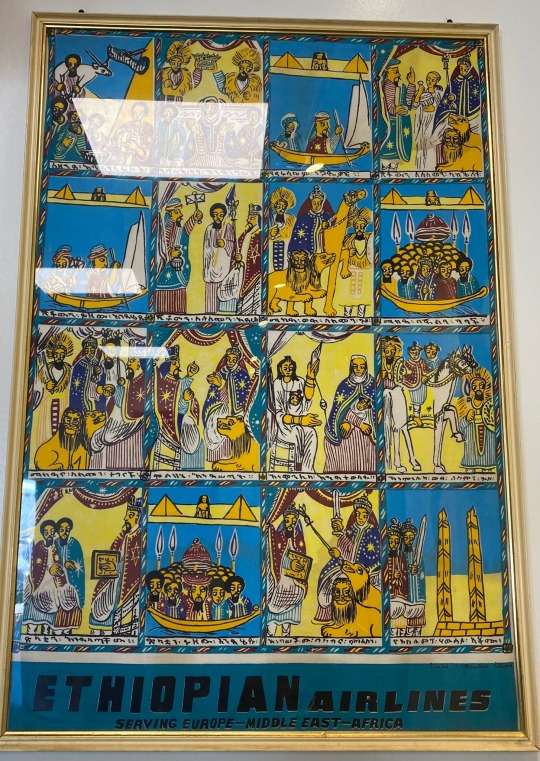





#Iran air#frank zapp#frank zappa#grateful dead#jam bands#jerry garcia#misictherpy#original photographers#pho#street photography#techno#ethiopian airlines
1 note
·
View note
Note
Are you really putting me on blast for a public comment to begin with?
Are you claiming that Judaism isn’t a religion? It most certainly is even if ethnically based historically. I know it’s matrilineal, but anyone can convert even if they’re not evangelical. Though there are ethnic differences even between Jews that are Ashkenazi, Sephardic, Mizrahi or Ethiopian.
Semitic people or Semites is a term for an ethnic, cultural or racial group associated with people of the Middle East, including Arabs, Jews, Akkadians, and Phoenicians. Gaza wasn’t even part of Judea, Ancient Israel or Samaria. It was the land of the Philistines.
If you believe in the text of the Torah, which coincides with the text in the Koran, then Arabs and Jews are related by Abraham. His sons just had different Mothers.
You have to understand that people’s words are being twisted right now. There are a lot of people that oppose the war, but do not oppose Jewish people. Bernie Sanders, the best candidate for president the US has had in decades in my opinion, opposes the war and that doesn’t mean he supports Hamas.
My point is not really about your opinion specifically. It’s about the right wing that is painting people with a broad brush as a way to deprive legal residents of due process. It’s a slippery slope that will be applied to anyone and he’s ignoring the Supreme Court. We’re entering really dark times. The Trump administration is using Antisemitism as an excuse to deport students and defund higher education. They’re using Jews as a scapegoat and the ADL is really not doing anything about it.
Yeah, retro, you really publicly post a racist screed as laughably & confidently shitty as that on one of my posts about antisemitism, and you really might get a response that publicly refutes it with all the respect it deserves.
“Semitic” Peoples & Antisemitism

Literally nobody that isn’t possessed by the ghost of an SS officer is using “Semitic” like that. It appears vestigially in “antisemitism” and is used in Linguistics to refer to Semitic Languages (there are Semitic-speakers; there are not Semitic peoples)—that’s it.
You pull up in a Jew’s comment section, insisting on this Nazi-ass 19-20th Century Scientific Racist racial classification of “Semites”, all in order to play mental gymnastic word games to claim the real victims of [word that means anti-Jewish bigotry] are a group of non-Jews at the hands of Jews… and you just might be put on blast for it.
And this isn’t even new; the way you’re using it was already starting to fall out of favor among anyone who wasn’t a proud self-described antisemite even before the Nazis came to power. It’s been understood as racist BS for more than century. Even Gil Anidjar, a pro-BDS professor at Columbia who shares a lot of your other views, understands this terminology is racist pseudoscience, writing in his book about the rise and fall of the word’s usage that “the opposing term was Aryan”.
That’s the racial framework you’re using. The “Aryan” one.
And who did these self-identified Antisemites target with their antisemitism? Did Wilhelm Marr’s Antisimeten-Liga that popularized the term allege an Arab conspiracy or a Jewish one? Did Hitler’s antisemitism lead him to kill 6 Million Arabs, or 6 Million Jews? Are there countless Arab organizations dedicated to fighting Antisemitism as such, or has that been left to Jews?
Arabs have their own word for bigotry against them. Stop trying to appropriate ours, especially when the people you’re claiming are the perpetrators are Jews. It’s dishonest, it’s cruel, it’s just gross.
Token “Good Jews”
Same with you goy-splaining about how Jews aren’t a monolith to act like all of what you said isn’t incredibly antisemitic. We know we’re not a monolith (possibly even more so than most other groups); our entire culture is built around structures of debate. But your inciting gish-gallop of talking points about “apartheid”, “open air prisons”, and terrorists being “freedom fighters” is one that would rightly make all but the most fringe token Jews, totally disconnected from Jewish community, balk.
In another message you sent, which I’m not going to respond to, you mention JVP, and OH MY G-D is it clear that this is where you’re getting your information about Jews. They’re an EXTREMELY fucking fringe group that harass and incite violence against other Jews, and they’re rightly understood by most Jews as a hate group akin to Autism Speaks. Like I said, they’re EXTREMELY fringe in the Jewish community. They have like 20,000-30,000 members, most of whom aren’t even Jewish, and all of their positions are miles outside of the already expansive & diverse tradition of discourse within Judaism.
Between them and Bernie Sanders, you can tokenize the “Good Jews” (you assume) agree with you all you want, that doesn’t make the rest of what you’re saying anything but grotesquely antisemitic.
And it does stand out that the “Good Jew” you name here is one whose speech on Passover—the Let My People Go holy day—completely omitted any mention of the hostages to position Palestinians as the sole victims of the conflict. It so clear that what it takes to qualify as a “Good Jew” is not just caring about groups in addition to Jews, but abandoning our own entirely. We have to assimilate and cut away pieces of our identity and so many in our community to fit into your framework.
Both sides are using Jews as a political football, and you’re just as much an example of this as Republicans. Just as Trump can take his false concern about Jews and shove it up his ass, so can you.
Am Yisrael
The Jewish people predates the concept of religion as a separate idea. “Faith” has very little to do with Jewish observance. There are obviously elements of Judaism that are religious, but that distinct categorization is external and does not describe Jewish collective identity.
Above I said “Jews have to assimilate and cut away pieces of our identity to fit into your framework”. That’s what Judaism-as-a-faith is. I put the comment about that in the tags rather than the body of the post because it’s a much less well-known by non-Jews, but that isn’t how the Jewish people have traditionally understood ourselves.
As Dara Horn puts it:
“Jews aren't a religion. There's millions of Jews who are secular Jews. Have you ever met a secular Mormon? There's an answer to who Jews are, and it's quite simple. We don't have to sit here and be like, ‘oh, are Jews a race or religion or nationality?’
Jews are a type of social group that was common in the ancient Near East, very uncommon in the West today; it's a joinable tribal group with a shared history, homeland and culture.
What I just said is a paragraph in English and in Hebrew it's one word that's two letters long: Am.”
This is the “Am” in “Am Yisrael” (the People/Nation of Israel), the endonym of the Jewish people.
It’s just… very clear from everything you’ve said that you haven’t spent any meaningful time around Jews or anyone who is even reasonably knowledgeable about us on anything past a surface level, and that doesn’t seem likely to change, because you keep spouting so many confidentiality wrong opinions about what we are/should be, while using fucking Nazi terminology to reverse the meaning of antisemitism on us, and not even taking a second to listen to us about us. You think you know who we are better than us. You don’t.
And this backpedaling to “oh I wasn’t talking about you” is bullshit. If you weren’t responding to the post why comment on it in the first place? Make your own damn post instead of making it my fucking problem. You saw a post talking about Zionism & decided to vomit up more of exactly the lies about Zionism I was refuting, and you just continue to double down on it.
I’m not responding to your other message. I don’t send anons. I’m not interested in wasting my time going back and forth debating your racist stochastic garbage full of the same 10 flimsy talking points. If you want to do better, start by shutting up and listening instead of telling us who we are or should be.
193 notes
·
View notes
Text
Redefining Antisemitism: Why All Semitic Peoples Must Be Included
For over a century, the term antisemitism has been narrowly defined to refer exclusively to prejudice and hostility toward Jewish people. While that usage is rooted in a very real and painful history—particularly the horrors of the Holocaust and the persistence of anti-Jewish sentiment across the globe—it is time to interrogate and expand the term’s definition.
Because Semitic people are not a monolith. And antisemitism, if we are honest, should not be either.
The Linguistic Truth
The term Semite refers to a broad group of people who speak or descend from speakers of Semitic languages—Hebrew, Arabic, Amharic, Aramaic, and others. This includes Jews, Arabs, Ethiopians, Assyrians, and more. The linguistic origin is clear. But over time, the term antisemitism has been exclusively applied to Jews, erasing the Semitic identity of millions of others who have also faced historic and ongoing oppression.
This isn’t just an academic oversight—it has serious ethical and political consequences.
A Weaponized Definition
Today, we see a dangerous misuse of the term antisemitism. Defending Palestinian rights, exposing war crimes, or criticizing the policies of the Israeli government can result in being labeled “antisemitic”—even when these critiques come from Arabs or other Semitic people themselves.
It is not only inaccurate to call Semitic people antisemitic for criticizing their oppression, it’s also morally absurd. The term has been twisted into a tool of suppression, used to silence legitimate resistance and shield systems of violence from accountability.
The Case of Palestine: Occupation, Apartheid, and Silence
Let’s be clear: what is happening to Palestinians under Israeli occupation is not a misunderstanding or a “complex conflict.” It is the deliberate displacement, surveillance, imprisonment, and dehumanization of an indigenous Semitic people.
• Gaza has been described as the world’s largest open-air prison. Today, it resembles a death camp.
• Between 500–700 Palestinian children are kidnapped by Israeli military forces annually, often taken from their homes at night, denied legal representation, and held in military prisons without charge.
• Palestinians are taxed by the occupying power, yet denied equal rights, legal protections, or meaningful political representation.
• Illegal Israeli settlers routinely attack Palestinian civilians under the protection—or participation—of Israeli forces.
And yet, when Palestinians speak out against this, they are told their resistance is antisemitic.
This is gaslighting at a global scale.
Expanding the Definition: A Moral Imperative
If we are going to fight antisemitism, then let us fight it in all its forms—against all Semitic peoples.
• Let us condemn the hatred and demonization of Jews wherever it occurs.
• But also condemn the dehumanization of Palestinians, Arabs, and other Semitic groups who are treated as second-class citizens, occupiable, bombable, and disposable.
This is not about minimizing Jewish suffering—it’s about recognizing that antisemitism cannot be a one-way street. When we exclude Arab Semites from the protection of this term, we reinforce a hierarchy of whose lives, whose languages, and whose lineages are worth defending.
Toward an Inclusive Framework
It is time for our language to reflect our values. The fight against hate must be principled, not political. If antisemitism means the hatred, marginalization, or violent erasure of Semitic people, then Palestinians must be included in that struggle—not criminalized for surviving it.
Reclaiming the full scope of antisemitism is not just about semantics. It’s about justice, solidarity, and truth.
And no liberation movement is complete if it erases others along the way.
#antisemitism#SemiticPeoples#Palestine#RedefiningAntisemitism#HumanRights#FreePalestine#DecolonizeLanguage#SemiticSolidarity#OccupationalViolence#EthnicJustice#IsraeliApartheid#SettlerColonialism#ChildrenInPrison#LanguageMatters#OppressionNarratives#SocialJustice#Activism#JusticeForAll
244 notes
·
View notes
Note
Honestly seeing this all go down and the really disproportionate and how they're trying to change the narrative shows how much this fandom doesn't understand the severity of digital blackface and how much genuine harm Atticus did.
like i truly do not think we will ever truly grasp the harm or lasting impact of PCCP's actions. of pretending to be a black person (and allegedly pretending to be a first gen Ethiopian jewish man) in this fandom while acting as a source of information on how to make fandom spaces safer for black people while doing essentially the opposite of that.
how many people saw him as a credible source of information?
how many people took ADVICE FROM HIM on how to depict characters of colour in fanworks?
how many people went to him so he could act as a sensitivity reader for their fics?
there is an air about this issue that wants to make this seem like it's an isolated incident which downplays the severity of his influence in this fandom. he was just one person. he was an asshole. but the environment that has been created in this fandom enabled him. so while he is used as a scapegoat for the less savoury parts of this fandom, since he's deleted all his blogs, the damage has already been done and it'll take MONTHS to truly understand the impact of someone with his reach and influence
70 notes
·
View notes
Text

THURSDAY HERO: Arieh Oz
Arieh Oz was a child survivor of the Holocaust who was saved by a Dutch family who hid him and his sister for three years. He later became a Lt. Col. in the Israeli Air Force who flew a rescue plane at Entebbe and piloted 1,122 Ethiopian Jews to safety in Operation Solomon.
Arieh was born Harry Klausner to a non-religious Jewish family in Wuppertal, Germany in 1936. The Klausners, like many other Jewish families, were thoroughly assimilated and proud Germans, identifying strongly with German culture and with minimal interest in Judaism. After the Kristallnacht pogrom of 1938, when Jews were murdered and synagogues destroyed throughout Germany and Austria, the Klausners realized there was no future for them in their beloved Germany, and they relocated to Holland, which seemed to be a more tolerant place, although life was far from normal. Harry and his sister Ruth were not allowed to attend school, and they had to wear the yellow star marking them as Jewish wherever they went. Still, life was bearable, until 1942, when the Nazis began arresting Jews and deporting them to concentration camps.
Harry’s parents hurriedly made plans to keep the family safe. With the help of their friend Nel van der Spek, a teacher and leader in the Dutch Resistance, they were introduced to Oepke and Jitske Haitsma, Dutch farmers with three young children, who agreed to take the two Klausner children into their home. Harry’s mother Rosa found a hiding place with another non-Jew, Petronella Ketel, and his father managed to escape Europe and flee to Palestine, then under British rule.
At only six years old, Harry and his sister Ruth, aged twelve, moved in with the Dutch farm family, who were complete strangers and didn’t even speak the same language. The Klausner children learned Dutch, did farmwork, and attended church with their hosts. The Haitsmas barely had enough money to feed their own family, but they shared what little they had with the two Jewish children, and the Hitsma kids were forbidden to have playdates with other children for fear the secret would come out. Once a year, Harry and Ruth were dressed in disguise and taken to visit their mother in her hiding place.
The Nazis were ruthless in searching out Jews, and the Klausner kids hid in a cramped attic during multiple raids by Nazi storm troopers and were never found. For three years they stayed with the heroic Haitsma family, living in constant fear of discovery. In September 1944, Allied forces began to liberate Holland. Eight-year-old Harry, hiding in the attic, heard fighter planes overhead each night, and listened so closely that he was able to distinguish which were German and which belonged to the Allies. As he lay there in the darkness, Harry decided that if he were fortunate enough to survive the war and reach adulthood, he would become a pilot.
The war ended in 1945, and the children’s nightmare came to an end when their mother, who had stayed safe and sound in her hiding place, showed up to retrieve them. In 1946 they traveled to Palestine to reunite with their father, which was nothing short of a miracle considering the fate of most German Jews. Harry later remembered how strange it was to see his father, who felt like a total stranger to him.
Anxious to leave behind all traces of the country that had so cruelly betrayed them, the Klausners changed their name to Oz, and Harry Klausner became Arieh Oz. Once again he had to learn a new language, and started school for the first time at age eleven. It was extremely difficult, but Arieh was strong and resilient, and graduated from high school the third in his class. Now it was time to fulfill his childhood dream, and he was accepted into the elite Israel Air Force Flight School. Arieh proudly earned his pilot’s wings in 1956 and excelled at his chosen career, soon becoming a flight instructor and then a young captain.
In the late 1950’s, the IDF began purchasing jumbo planes to fly long routes, carrying weapons from Europe and providing humanitarian aid to African countries facing famine. They needed someone to command this new fleet, and despite his young age, Arieh was the best man for the job. He was promoted to Lt. Col. Oz, founder of the Israeli Air Force’s International Squadron. He recruited the best pilots in Israel to join his team, and later explained, “We completed many intricate, complex and difficult missions. We had three planes operating every week, two of which flew to France to bring weapons and one of which flew to countries in Africa for aid and assistance.”
After the Six Day War in 1967, Arieh left the IDF and became a pilot for El Al, Israel’s largest airline. In 1972, thirty years after he and Ruth had moved in with the kind-hearted Haitsmas’, Arieh flew the Dutch family to Israel to celebrate his son’s bar mitzvah, and to be honored as Righteous Among the Nations by Israeli Holocaust Memorial Yad Vashem.
Although not on active military duty, Arieh continued to participate in many top-secret and specialized missions. In 1976, terrorists hijacked Air France Flight 139 and forced the pilot to land in Entebbe, Uganda. The 248 passengers were held hostage for two days, after which the non-Jewish hostages were released, leaving 94 Jews stuck on board the plane, repeatedly threatened with death by the vicious terrorists.
To end the crisis, the IDF worked with Israeli intelligence agency Mossad to plan a bold rescue operation. An expert on delicate, dangerous missions, Arieh was chosen as one of four pilots to take down the terrorists and save the hostages. For seven hours, Arieh flew under radar to Entebbe, where the terrorists had cut the lights on the runway and he had to land the aircraft in the darkness. His bravery and calmness under pressure helped save 102 hostages and kill the terrorists. Sadly, three hostages lost their lives, along with an IDF commander, Lt. Col. Yoni Netanyahu, brother of the current Israeli prime minister.
In 1991, Arieh was selected to lead another, very different, mission of heroism. He was a pilot of Operation Solomon, a covert Israeli military operation to airlift thousands of Ethiopian Jews, suffering from grinding poverty and religious persecution, to the Jewish homeland. He later recalled, “I flew a Jumbo 747 aircraft – the first 747 ever to land in Addis Ababa, Ethiopia. You won’t believe it but I brought, on one plane, 1,087 Ethiopian Jews to Israel.” The number was later revised to 1,122, because some of the Ethiopian mothers, still wary of the Israelis and not knowing what to expect, hid young children in their clothing and bags. The flight holds the Guinness World Record for most passengers ever carried by a commercial airline.
Arieh retired from El Al in 2001 with 28,000 flight hours, andd then served as aviation consultant and accident investigator for the Israeli Ministry of Transport. He published his autobiography, “Quest for Freedom,” in 2014. Arieh lives in Ramat Hasharon, Israel, with his wife of over sixty years, Bat-sheva. They have three children and seven grandchildren.
For their heroic actions in saving persecuted Jews, we honor Arieh Oz and Oepke & Jitske Haitsma as this week’s Thursday Heroes.
53 notes
·
View notes
Text


“Hecate, whom Zeus son of Kronos honored above all others, granting her magnificent privileges: a share of both the earth and of the undraining sea. From the starry heaven too she has a portion.” (Hesiod - Theogony)
Hekate - Goddess of Witchcraft and Keeper of Keys Talon Abraxas
Hecate the goddess of Greek mythology has been primarily remembered for her associations with magic and witchcraft. Throughout history however, her sphere of influence also included the moon, night, crossroads, boundaries, ghosts and necromancy. Although Hecate was once considered to be a powerful Greek goddess of witchcraft, Hecate was not a major deity when compared, for instance, to the Twelve Olympians.
There are therefore few myths which revolve around this Greek goddess of magic. Nevertheless, the goddess Hecate plays a particularly important role in the Greek myth which relates the abduction of Persephone. It is also from this myth that the quintessential representation of Hecate, as a goddess holding a flaming torch in each hand, is derived.
The Powers of Hecate, the Greek Goddess of Witchcraft
It is generally believed that the goddess Hecate was the daughter of Perses and Asteria, both of whom were from the second generation of Titans. Nevertheless, some have claimed that she was the daughter of Zeus and either Hera or Pheraea. Yet others have stated that she was a daughter either of Leto or of Tartarus.
In any case, it is widely accepted that Hecate the goddess was not originally a member of the Greek pantheon. In fact, her cult is said to have originated in ancient Thrace, or perhaps in Caria, Anatolia. The original worshippers of Hecate believed that the goddess had power over heaven, earth, and the seas, thus making her an incredibly powerful goddess.
Hecate, whose name came from the Greek word hekatos meaning “worker from afar,” had the power not only to bestow upon those she favored wealth, good fortune, and wisdom, but also to withhold these gifts from those she perceived as unworthy. She was honored by all the gods, including Zeus. As she sided with the Olympians during the Titanomachy, she was the only member of the old regime who retained her powers following the defeat of the Titans.
Within ancient Greek religion Hecate had many different roles, as goddess not just of witchcraft, but also of magic, spells, the night, ghosts, light, necromancy, and even the moon. She was also seen as a goddess of oikos, meaning the household and family, and doorways. Some have even connected her to Artemis, who was portrayed in a similar style, with boots, torches and dogs.
Due to her extensive powers, Hecate has been confused and identified with several other deities throughout history. For instance, as a goddess of nature, she was identified with Demeter, whilst as a moon goddess, she has been identified with Persephone.
"I am she that is the natural mother of all things, mistress and governess of all the elements, the initial progeny of worlds, chief of powers divine, Queen of heaven, the principal of the Gods celestial, the light of the goddesses: at my will the planets of the air, the wholesome winds of the Seas, and the silences of hell be disposed; my name, my divinity is adored throughout all the world in divers manners, in variable customs and in many names, [...] Some call me Juno, others Bellona of the Battles, and still others Hecate. Principally the Ethiopians which dwell in the Orient, and the Egyptians which are excellent in all kind of ancient doctrine, and by their proper ceremonies accustomed to worship me, do call me Queen Isis." (Lucius Apuleius in The Golden Ass)
Who is Hecate within Greek Mythology?
Unfortunately, there are not many Greek myths about the goddess Hecate. She was first mentioned within Hesiod’s 8th century Theogony. Since there was little mention of her before Theogony, some academics have argued that the ancient Greek poet was from a town where Hecate had a substantial following and that his writing helped to promote her cult.
The Greek goddess Hecate is also mentioned in the myth of Persephone’s abduction by Hades. In fact, she plays an important role in this tale. Hecate is mentioned in Homer’s version of the myth, which is known as the Homeric Hymn to Demeter, her most famous literary manifestation which was written in 600 BC.
According to the poet Homer, Hecate was the only deity, apart from the sun god Helios, who witnessed the abduction of Persephone. Therefore, when Demeter, the goddess of agriculture and Persephone’s mother, began the search for her daughter, Hecate accompanied her with a flaming torch in each hand. After Persephone was found, Hecate became her companion and attendant. During the time of the Greek tragedians, the notion that Hecate was a chthonic, or underworld, deity due to her association with Persephone became common.
Hecate is also included in Greek mythology related to the Gigantomachy. Here legend had it that she fought alongside the Olympians and killed Clytius the giant using her famed torches. This story was so much entrenched within collective consciousness that the goddess Hecate is depicted fighting against Clytius alongside Artemis on the Pergamon Altar, within the Gigantomachy frieze.
In another legend, Hecate was associated with a black dog said to have once been the Trojan queen Hecuba. The wife of the Trojan king Priam at the time of the Trojan War, she ended up going mad and leaping into the sea when she was taken as a slave. The story claims that the goddess Hecate took pity on her and tuned her into a dog who then became her companion.
31 notes
·
View notes
Text
On love and sacrifices
There’s so much more to this scapegoating business and big sacrifices referenced in the Good Omens narrative than the literal goats. And they’re only getting bigger, louder, final.
But let’s take it slow and start with the beginning, quite literally — i.e., with the Good Omens 2 title sequence. As we follow Aziraphale and Crowley on their journey, the universe warps and their usual left and right side positioning switches during the magic show (not accidentally an act of trust and sacrifice required both from the angel and the demon). They stay so throughout the next scene, which is their little dance in the air, and after they seemingly get settled on the A. Z. Fell and Co.’s roof and back to normal, the flipped sky in the background suggests that something’s not quite right yet. In the central part of the shot looms a large, humanlike shadow of the Elephant Trunk Nebula.


The nebula is a part of a constellation called Cepheus, after an Ethiopian king from the Greek mythology who agreed to sacrifice his only daughter in order to appease the gods and end a local calamity started by her mother and his wife, Cassiopeia (talk about generational responsibility). With time and a delightfully ironic twist of fate, the name of said daughter, Andromeda, became more famous than that of her father. Although she was chained up to a rock and offered to the sea serpent Cetus, the girl was spotted by the warrior Perseus, casually flying over the sea — either on the back of the Pegasus or thanks to a pair of winged sandals — after his victory over Medusa. He fell in love on the spot, defeated the serpent (with the help of a magical sword or Medusa’s severed head, depending on the varying sources), and freed the princess. That’s not exactly where their story ends, but we won’t be getting into the rest here.
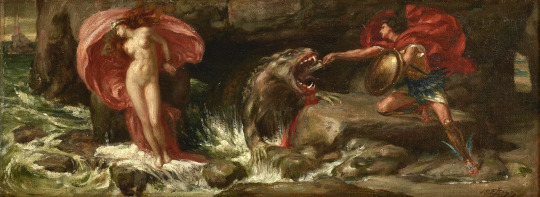
Not surprisingly, Neil has mentioned two parallel child sacrifice stories from the biblical context back in August. The first is one of the big ones — The Binding of Isaac. God's command to sacrifice Isaac, his only son, was a test of Abraham's faith. The angel of the Lord intervenes and provides a ram to be sacrificed in the boy’s place.
The second one isn’t nearly as popular, but you might have heard a variant of it in fairy tales or as the Law of Surprise invoked in The Witcher saga. In exchange for Israel’s victory over its enemies in battle, Jephthah had rashly promised God to repay the debt with the first thing seen on his return back home. The victorious warrior didn’t suspect to see his only child moving innocently "to meet him with timbrels and with dances" though. In horror, Jephthah covered his eyes with his cloak, but to no avail: ultimately, he was forced to honor his vow to God, and the girl was sacrificed. As grisly as it might look like in the Old Master’s paintings, it’s important to remember that human sacrifices weren’t limited to physical offerings only — Jephthah’s daughter might have been offered to God in the sense of officially shunning her family and dedicating her life to service instead, probably sequestered in a temple somewhere.
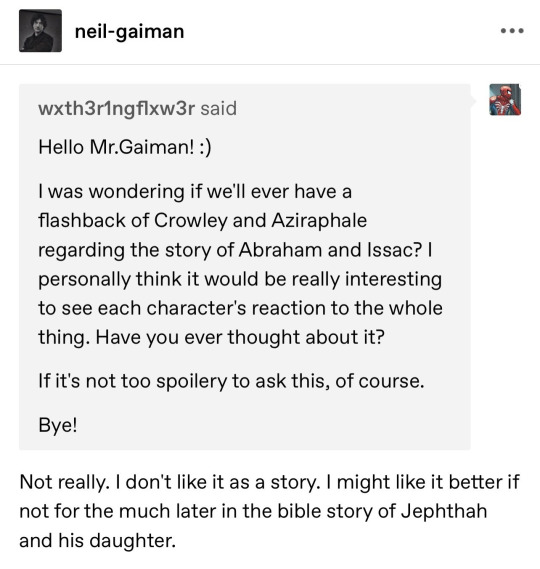
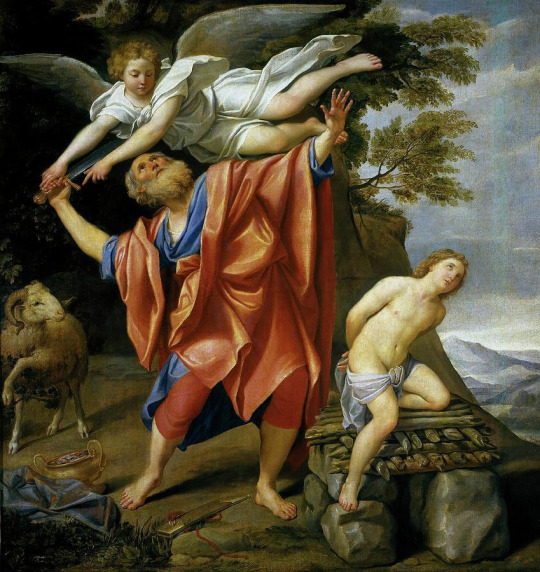
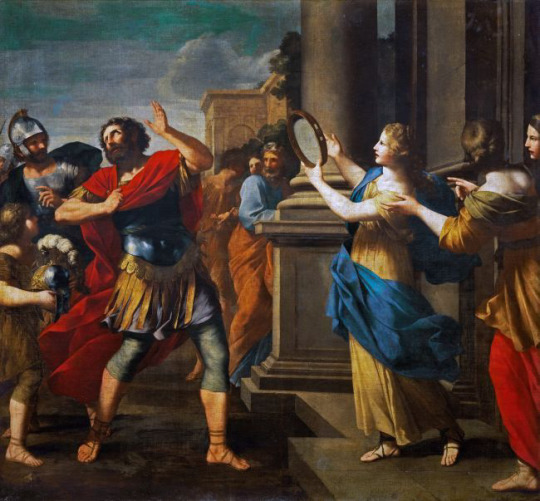
Interestingly, the main character of a big chunk of the Bible and the reason for the Second Coming happens to be THE most influential child sacrifice in the modern history. You know, a certain 33-year-old carpenter sent by his Heavenly Father to die on a cross for the sins of the mankind? Someone better call Aubrey Thyme ASAP.
Circling back to Aziraphale, he could be also seen as a representative of the concept of filial piety, since Eden willing to personally take a Fall not only for the humanity’s collective or individual transgressions, but the shortcomings of his Ineffable Parental Figure as well. Our favorite angel angel always fights for what is right and good, sure, but why would that be even a thing if God was truly omniscient, omnipresent, and omnipotent?


If Aziraphale’s medal is anything to go by, it looks like we might get an answer from the way it’s introducing another mythological narrative into the game, that is the story of Daedalus and Icarus. The most absorbing thing about this is the stark contrast to the recurring child sacrifice references for S3 mentioned in this post — Daedalus isn’t a father who wanted to sacrifice his son, it was his attempt to save him from imprisonment that ultimately drove Icarus to his death. The boy ignored his father’s explicit instructions, committing the grave and culturally universal sin of disobedience to one's parents that simply couldn’t go unpunished, one way or another.
But Icarus’s transgression could be seen both as high-flying ambition and striving for personal accomplishment as well as humanitarian sacrifice for knowledge and humanity’s advancement in general.
Similarly to a certain angel who left everything for what superficially seems like a work promotion, but is the ultimate act of love — both for his demon and the children they have been protecting and nurturing together for six thousand years. From the very Beginning, his white wings have been shielding everything he holds dear in this world.

#happy easter#child sacrifice#greek mythology#bible fanfiction#good omens#good omens meta#never skip the intro#peter anderson studio#easter eggs#nebula#archangel michael approves#sword fighting with snakes#prince and the serpent#supreme archangel aziraphale#bamf aziraphale#aziraphale needs a hug#aziraphale#crowley#yuri is doing her thing#daedalus and icarus#cepheus and andromeda#abraham and isaac#jephthah’s daughter#god and jesus
157 notes
·
View notes
Text










Zurich Airport, CH (No. 3)
Terminal E contains gates prefixed E, and is also known as the midfield terminal or Dock E. It is a stand-alone satellite terminal located on the opposite side of runway 10/28 from the Airside Centre, and is situated between runways 16/34 and 14/32. It is entirely used by non-Schengen international flights and became operational on 1 September 2003. It is connected to the Airside Centre by the Skymetro, an automated underground people mover.
Zurich Airport has three runways: 16/34 of 3,700 m (12,100 ft) in length, 14/32 of 3,300 m (10,800 ft) in length, and 10/28 of 2,500 m (8,200 ft) in length. For most of the day and in most conditions, runway 14 is used for landings and runways 16 and 28 are used for takeoffs, although different patterns are used early morning and in the evenings. Zurich voters approved the extension of two runways at Zurich Airport on March 3, 2024. The extension of runway 28 by 400 metres (1,300 ft) to the west and runway 32 by 280 metres (920 ft) to the north is expected to increase safety and reduce noise pollution. The project is supported by the government of Zurich and the majority of political parties.
Source: Wikipedia
#ET-ANO - Boeing 777-260(LR) - Ethiopian Airlines#N796UA - Boeing 777-222(ER) - United Airlines#Baileys Irish Cream#Flughafen Zürich#Zurich Airport#Kloten#Schweiz#Switzerland#airplane#C-GWUU - Boeing 787-9 Dreamliner - Air Canada#Terminal E#ZRH#architect#engineering#technology#Swiss Alps#landscape#cityscape#Control tower#Europe#summer 2023#travel#original photography#vacation#tourist attraction#landmark#architecture#HB-JHM - Airbus A330-343 - Swiss#HB-IOD - Airbus A321-111 - Swiss#PH-BXF - Boeing 737-8K2 - KLM
1 note
·
View note
Text
Season 11, Episode 2: Form and Void (May 29th)
While Sam continues to deal with the "rabids" situation and his own deteriorating state, Dean is called back by Jenna when baby Amara begins exhibiting dangerous traits. -Super-wiki



Originally aired on October 14th, 2015.
Written by Andrew Dabb, directed by Phil Sgriccia.
Fun fact: Baby Amara is played by triplets. The name Amara occurs in many cultures and is ascribed a variety of meanings: "eternal" (German), "unfading" (Greek), "immortal" (Sanskrit) and "bitter" (Latin). In Bahasa Indonesia the word amarah means "anger". In Ethiopian legends, Amara is the name for "paradise."
Enjoy the re-watch, and check out #spn20rewatch for more!
8 notes
·
View notes
Text


"I am she that is the natural mother of all things, mistress and governess of all the elements, the initial progeny of worlds, chief of powers divine, Queen of heaven, the principal of the Gods celestial, the light of the goddesses: at my will the planets of the air, the wholesome winds of the Seas, and the silences of hell be disposed; my name, my divinity is adored throughout all the world in divers manners, in variable customs and in many names, [...]
Some call me Juno, others Bellona of the Battles, and still others Hecate. Principally the Ethiopians which dwell in the Orient, and the Egyptians which are excellent in all kind of ancient doctrine, and by their proper ceremonies accustomed to worship me, do call me Queen Isis." (Lucius Apuleius in The Golden Ass)
Hecate, whose name came from the Greek word hekatos meaning “worker from afar,” had the power not only to bestow upon those she favored wealth, good fortune, and wisdom, but also to withhold these gifts from those she perceived as unworthy. She was honored by all the gods, including Zeus. As she sided with the Olympians during the Titanomachy, she was the only member of the old regime who retained her powers following the defeat of the Titans.
Within ancient Greek religion Hecate had many different roles, as goddess not just of witchcraft, but also of magic, spells, the night, ghosts, light, necromancy, and even the moon. She was also seen as a goddess of oikos, meaning the household and family, and doorways. Some have even connected her to Artemis, who was portrayed in a similar style, with boots, torches and dogs.
Hecate by Krzysztof Krawiec, 2023
13 notes
·
View notes
Text
🌸🌸🌸🌸🌸
Dear Friends,
The cherry blossoms are at peak bloom in the District of Columbia, and I miss you.
I think what I mean is, I miss the version of you that could come and meet up with a version of me here. I miss the safe future opportunity to drag you around this already beautiful city and show you what I love about it.
I’d take you to all the bookstores and list the pros and cons of each one. I’d show you the one connected to the restaurant, where I grabbed a celebratory lunch after receiving my first grown up job offer. I’d tell you that I made the best friends at East City Books. I’d proudly point out all the libraries along the way.
We’d go to museums. Maybe the National Building Museum, which was my favorite field trip in second grade. Definitely we’d go to the Museum of the American Indian and the Museum of African American History and Culture. We’d catch the other Smithsonians based on our tolerance for groups of field trip kids in bright neon shirts. If we end up at Air and Space, I’d use you as my excuse to go see the planetarium show.
At the zoo I’d tell you that pandas just look like humans in panda suits to me.
Maybe, if it was June, the Kennedy Center would be lit up in rainbow colors. We could look at it from afar on the steps of the Swedish embassy, or we could go up close and explore the sculptures.
I’d point out the Watergate and say, “I’m pretty sure it’s haunted.”
Maybe if it’s a nice day, we could go roller skating at Anacostia Park. I still haven’t crossed it off my bucket list yet! You could be my companion and watch me skate really badly.
We could try so much food. We could split a vegetarian Ethiopian meal. Later we could go to the Finnish cafe on R street. We could go so many places and get sushi or dumplings or soul food or tacos or blue crabs or falafel or empanadas or varenyky or French pastries. Of course we would get the giant cupcakes at Baked and Wired, because the ones at Georgetown Cupcake are just too small.
We’d listen for all the different languages as we walked outdoors. On U Street I’d tell you to listen for music and say “see? that’s Gogo!” Maybe downtown we’d pass by a demonstration, and the bucket drums would provide a bright, friendly rhythm for our walk.
We’d identify flags—the flags hanging from embassies, the flags hanging from apartment windows and from the rear view mirrors of cabs.
We’d ride the metro together. I’d walk you to the very end of the platform, where you can get the train cars with the most seats. I’d teach you how to navigate the buses, too.
I’d explain to you that this is my home. I’d say that of course city isn’t perfect, but it helps to know that Martin Luther King’s statue looks out across the water at the Jefferson Memorial, that Dr. King’s gaze challenges Jefferson—and us—to expand our definitions of freedom and equality to more people.
I am writing this because I miss you, and I miss the opportunity to show you this. Whatever happens, know that these things were at one point real. That this place I call home was at one point real.
I do not know exactly what the future will bring. I know it will bring a fight. I know it is going to bring hardship. I know it could even transform this city into something unrecognizable.
I hope the future will one day bring us back together, all the same. Me and you and the city.
With love,
Blue
10 notes
·
View notes
Text
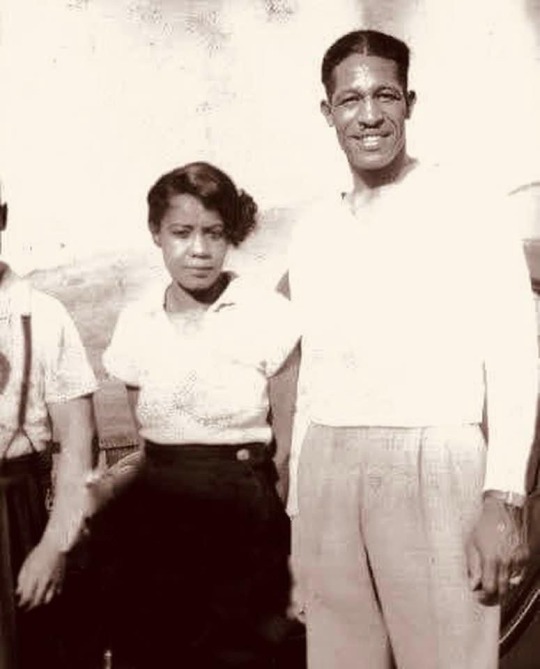
History They Didn't Teach You In School
Scholars have left him out of the history books and Hollywood couldn’t be bothered to acknowledge his existence either. He was Howard Hughes’ top engineer and lifelong best friend. This is about Frank Mann, the hidden genius behind much of Howard Hughes’ success in the world of aviation and mechanics. Frank Calvin Mann (November 22, 1908 – November 30, 1992) was an African American engineer who was known for his participation in many Howard Hughes's projects including the Spruce Goose. He also starred in the Amos 'n' Andy radio show. Apparently, his lifelong friendship with Hughes was instrumental in opening doors for Mann's exceptional talents.
A native of Houston, Texas, Frank Calvin Mann's parents wanted him to become a schoolteacher, but from childhood, he had a natural ability to fix things. At age 11, he had his own mechanic shop. As a teenager, he worked alongside airplane mechanics, repairing engines. By the ago of 20, he had designed and built several of his own Model-T cars. It was unheard of in the 1920s for a Black man to have anything to do with cars, trains, or airplanes. His life-long friend Howard Hughes was instrumental in opening doors for Mann's exceptional talents.
Mann attended the University of Minnesota and UCLA where he earned a mechanical engineering degree. World War II equipment that revolutionized military weaponry would not exist if not for his involvement. Incredibly, few Americans are aware of Frank Mann. He was the first Black commercial pilot for American Airways. He was also a distinguished military officer. In 1935, following Italy’s invasion of Ethiopia, Frank Mann flew reconnaissance missions for the Ethiopian army.
He served in the World War II Army Air Corps and was the primary civilian instructor of the famous Tuskegee Airmen in 1941. He left Tuskegee after a rift with the U.S. government, which didn't want the Squadron, an all-Black unit, flying the same high caliber of airplanes as their White counterparts. An angry Mann had refused to have his men fly old "World War I biplane crates," because his airmen had proven themselves as equals.
Though they were being given inferior equipment and materials, their squadron never lost a plane, bomber, or pilot, and they were nicknamed the "Red Tails.” After the war, Mann was instrumental in designing the first Buick LeSabre automobile and the first communications satellite launched for commercial use.
His pride and joy was a miniature locomotive enshrined in the Smithsonian Institute, Mann also played a principal role in the Amos ‘N’ Andy radio show. He moved back to his hometown in the 1970s.
Frank Mann died November 30, 1992 in Houston.
93 notes
·
View notes